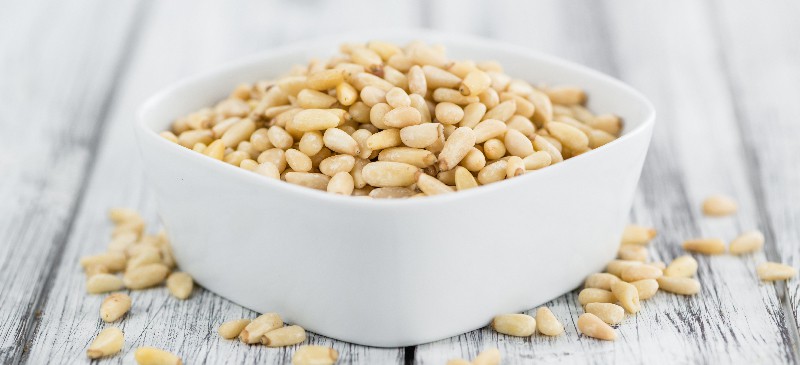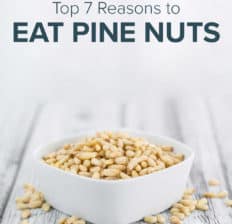This Dr. Axe content is medically reviewed or fact checked to ensure factually accurate information.
With strict editorial sourcing guidelines, we only link to academic research institutions, reputable media sites and, when research is available, medically peer-reviewed studies. Note that the numbers in parentheses (1, 2, etc.) are clickable links to these studies.
The information in our articles is NOT intended to replace a one-on-one relationship with a qualified health care professional and is not intended as medical advice.
This article is based on scientific evidence, written by experts and fact checked by our trained editorial staff. Note that the numbers in parentheses (1, 2, etc.) are clickable links to medically peer-reviewed studies.
Our team includes licensed nutritionists and dietitians, certified health education specialists, as well as certified strength and conditioning specialists, personal trainers and corrective exercise specialists. Our team aims to be not only thorough with its research, but also objective and unbiased.
The information in our articles is NOT intended to replace a one-on-one relationship with a qualified health care professional and is not intended as medical advice.
Pine Nut Nutrition: The Super Nut You Should Be Eating!
August 22, 2023

You’ve heard of the power of the mighty almond, but did you know that pine nuts are a close second as a nutritional super nut? Pine nut nutrition is the real deal, making pine nuts some of the healthiest nuts around.
This little tree nut is a tasty, nutrient-packed treat that has some incredible benefits to its name, such as potentially helping prevent certain types of cancer and even stabilizing mood disorders.
I know you’re already interested — but where do pine nuts come from? While they’re found on almost every continent, only 18 species of pine trees in Europe, North America and Asia produce pine nuts large enough for human consumption.
AThis is no newfound discovery. Pine nuts have been cultivated for more than 10,000 years and were mentioned in ancient Greek history and eaten by Roman soldiers as “campaign food” when they invaded Britain two millennia ago.
Perhaps pine nuts’ most well-documented benefit is its ability to help with weight maintenance, but it’s far from the only one.
What Are Pine Nuts?
Pine nuts are the edible nuts that come from pine trees (family Pinaceae, genus Pinus). The process of extracting the final version of what you buy at the store is a bit complicated, beginning with the maturation of the pine cone from which it’s taken. Depending on the species, that process can take nearly two years to complete.
Once the cone has matured, it is harvested by placing it in a burlap bag and then is exposed to a heat source (generally the sun) in order to dry out the cone. Drying is usually over after about 20 days, and then the cones are broken apart and the nuts separated out to be prepared for consumption.
As a tree nut, pine nuts aren’t a legume, such as the peanut, but rather a hardened fruit, like the almond. This means that after removing the nuts from pine cones, their outer shells also must be removed before they’re ready to eat.
The pine nut has been a hugely important food for thousands of years. Native Americans living in the Great Basin (a large area in the Western U.S.) have harvested nuts from the pinyon pine tree for over 10,000 years, according to some historical documentation.
Harvest time for the pine nut signaled the end of harvest season for these Native Americans, who usually found this to be their last large group harvest task before retiring for the winter. In these areas, the pine nut is still traditionally known as the “pinyon nut” or “pinon nut.”
In Europe and Asia, pine nuts were popular dating back to the Paleolithic era. Egyptian physicians were recorded as prescribing pine nuts for various illnesses, specifically coughing and chest problems. A philosopher and scholar from Persia even recommended eating them to help treat bladder problems and increase sexual satisfaction.
Nutrition Facts
Pine nut nutrition is no joke. These small nuts are packed with a ton of vitamins and minerals essential to the human body, and don’t be too concerned about the fat content – similarly to almonds, the healthy fat found in pine nuts actually helps improve satiety (the feeling of being full), and pine nuts are associated with weight loss and healthy weight management.
A one-ounce serving of dried pine nuts (about 28.4 grams) contains approximately:
- Calories: 191
- Total Carbohydrates: 3.7 g
- Fiber: 1.1 g
- Sugar: 1 g
- Total Fat: 19.4 g
- Saturated Fat: 1.4 g
- Polyunsaturated Fat: 9.7 g
- Monounsaturated Fat: 5.3 g
- Trans Fat: 0 g
- Protein: 3.9 g
- Sodium: 0.6 mg (0.03% DV)
- Magnesium: 71.2 mg (17% DV)
- Vitamin E: 2.6 mg (17% DV)
- Zinc: 1.8 mg (16% DV)
- Phosphorus: 163 mg (13% DV)
- Vitamin K: 15.3 mcg (13% DV)
- Iron: 1.6 mg (9% DV)
- Thiamine: 0.1 mg (8% DV)
- Riboflavin: 0.1 mg (8% DV)
- Niacin: 1.2 mg (8% DV)
*Daily Value: Percentages are based on a diet of 2,000 calories a day.
Health Benefits
1. Can Help Lower Cholesterol
Research consistently shows a reduction in bad cholesterol levels when pine nuts are introduced into the diet.
Why is that so important? For one, poor cholesterol levels put you at risk for heart attack or stroke because LDL cholesterol builds plaque in the arteries, constricting blood flow.
Tree nuts, including pine nuts, have been proven to reduce cholesterol levels and specifically help prevent atherosclerosis, one common syndrome involving plaque buildup in arterial blood vessels. A 2014 study showed significant improvement in cholesterol lipid levels in women with metabolic syndrome, a cluster of conditions including high cholesterol that indicate a risk for heart disease (among other diseases), after only six weeks of nut consumption.
2. Help Maintain Healthy Weight
The combination of nutrients found in pine nut nutrition also has proven results in fighting obesity and aiding a healthy weight and metabolism. Researchers find that subjects who regularly consume pine nuts — along with other tree nuts — have a lower average weight, smaller weight circumference and even a lower level of insulin resistance.
Not only can these nuts help you manage weight, but tree nut consumption is also strongly associated with a significantly healthier diet overall. People who eat them statistically consume more fiber, vitamin E, calcium, magnesium and potassium, while taking in less sodium.
3. May Lower Blood Pressure
Another heart-related benefit of pine nuts is their high levels of magnesium. High magnesium intake is associated with low blood pressure levels and lower risk of stroke.
In addition, a 2022 study concluded that “an average consumption of at least one serving (15 g) per week of peanuts, almonds, and/or pine nuts may be inversely associated with the risk of hypertension among Korean adults aged 40 years and older, in a dose-response manner.”
As high blood pressure can cause a long list of serious health problems, including heart failure, aneurysm, reduced kidney function and vision loss, it’s important to maintain a diet loaded with nutrients that will help you maintain healthy blood pressure.
If you’re at risk for high blood pressure, start introducing pine nuts and other heart-healthy foods into your daily diet.
4. Support Bone Health
Believe it or not, vitamin K builds bones better than calcium.
Men and women with the highest levels of vitamin K2 were less likely to suffer bone and hip fractures as compared with those with low vitamin K2 levels, according to the Framingham Heart Study.
Interestingly, pine nuts are double-protective when it comes to bone health — not only does their vitamin K content help build healthy bones, but one of the most common causes of vitamin K deficiency is cholesterol-lowering pharmaceuticals (which you shouldn’t need if you eat cholesterol-lowering foods, such as pine nuts). This isn’t something you’ll find from most tree nuts — in fact, pine nuts and cashews are the only two tree nuts with any significant level of vitamin K.
5. May Lower Risk of Certain Types of Cancer
Another incredible part of pine nut nutrition is its magnesium content. (It’s a great food if you’re dealing with magnesium deficiency.) One small serving (just an ounce!) of pine nuts accounts for 17 percent of the recommended daily intake amount of magnesium.
Diets high in magnesium are associated with lower risks of multiple types of cancer. One study followed over 67,000 men and women to observe the incidence of pancreatic cancer as it was associated with magnesium intake.
Researchers found that every decrease of 100 milligrams of magnesium per day accounted for a 24 percent higher risk of developing pancreatic cancer. These changes couldn’t be determined by any other factors, such as age differences, gender or body mass index.
Another study tracked the incidence of colorectal cancers per magnesium intake in postmenopausal women (the age group for whom these cancers are most common). Researchers found a positive correlation between increased magnesium and lower instances of colorectal cancers. This particular study recommends consuming 400 milligrams of magnesium per day for the most effective cancer-preventative results.
In addition, nut consumption in particular, including pine nuts, has been shown to help reduce the risk of colorectal cancer, pancreatic cancer and stomach cancer.
6. Could Improve Eye Health
What do pine nuts and kale have in common? For one, they both contain lots of lutein, a carotenoid antioxidant that is known as “the eye vitamin.”
While there are over 600 carotenoids your body can utilize, only about 20 of those are able to be transported to your eyes. Of those 20, just two (lutein and zeaxanthin) are deposited in high quantities into the macula of your eyes.
Clearly, these antioxidants are key to maintaining healthy eyes. Lutein, with its brother zeaxanthin, helps prevent macular degeneration and glaucoma by fighting free radical damage caused by “blue light,” sun exposure and other factors such as poor diet.
Some studies even indicate that those who have already suffered some macular damage can halt further damage by introducing more lutein-rich foods into their diet. Pine nuts are one easy treat that can help you on your way.
7. Help Stabilize Mood
In a 2015 study, researchers released findings of a study on the dietary intake of magnesium in adolescents with depression, anxiety disorders and ADHD. The study found that higher magnesium (like that found in pine nut nutrition) was associated with less “externalising behaviour,” such as angry outbursts and other outward behaviors associated with these mood disorders.
Another study followed almost 9,000 adult men and women and discovered a link between magnesium and depression. This study found a strong correlation between low magnesium intake and appearance of depression in people under the age of 65.
In addition, pine nuts have been examined for their effects on cognition with promising results. For instance, habitual nut consumption was associated with better cognitive function among Qatari adults.
How to Use
The easiest way to introduce pine nuts into your diet is to buy them pre-shelled.
Because of their high fat content, it’s not a good idea to keep pine nuts in a room temperature storage area. They should be refrigerated after bought, and once opened, they should be kept in an airtight container and either refrigerated or frozen.
When kept at room temperature, an open bag of pine nuts can be expected to be good for only about a week before going rancid. However, they can last one to two months in your refrigerator, especially in an airtight container.
One of the most well-known uses of pine nuts is in making pesto. In pesto recipes, pine nuts are often referred to as pignoli or pinoli in Italian.
They are also often used to top salads and other cold dishes but may also be cooked. They have an almost butter-like texture, as they are high in oil, and have a mild, sweet texture with a subtle pine scent. You can lightly toast pine nuts in order to bring out their flavor more boldly.
Because of their mild flavor, they’re delicious in sweet and savory items alike. It’s not uncommon to find pine nuts as an ingredient in biscotti, cookies and certain types of cake.
Recipes
Since pesto is one of the most versatile types of food out there, of course some of my favorite pine nut recipes are pesto! You can try a more traditional Basil Tomato Pesto recipe or go the vegan route with Vegan Basil Pesto.
If you’d like to try pine nuts more in their original form, try this delicious Massaged Kale Salad recipe. The combination of ingredients and massaged kale help to offset the slight bitterness often associated with kale, and this will be your favorite new salad in no time!
Risks and Side Effects
Like all nuts, pine nuts have been known to cause allergic reactions. Many of these are anaphylactic reactions, meaning that if you know you are allergic to other tree nuts, you should avoid pine nuts.
Another less common allergic reaction to pine nuts is known as pine mouth syndrome. It’s not dangerous, but it’s marked by a bitter or metallic “taste disturbance” after eating pine nuts. There’s no known treatment other than to discontinue eating pine nuts until symptoms abate.
Final Thoughts
- Although pine nuts are on the pricey side, they are a worthy addition to your regular diet.
- Pine nut nutrition contains a valuable list of powerful vitamins, minerals and other nutrients vital to good health.
- Whether you want to maintain a healthy weight, regulate blood pressure or lower your cholesterol, pine nuts are a delicious addition to many dishes you love and can benefit you thanks to pine nut nutrition!






